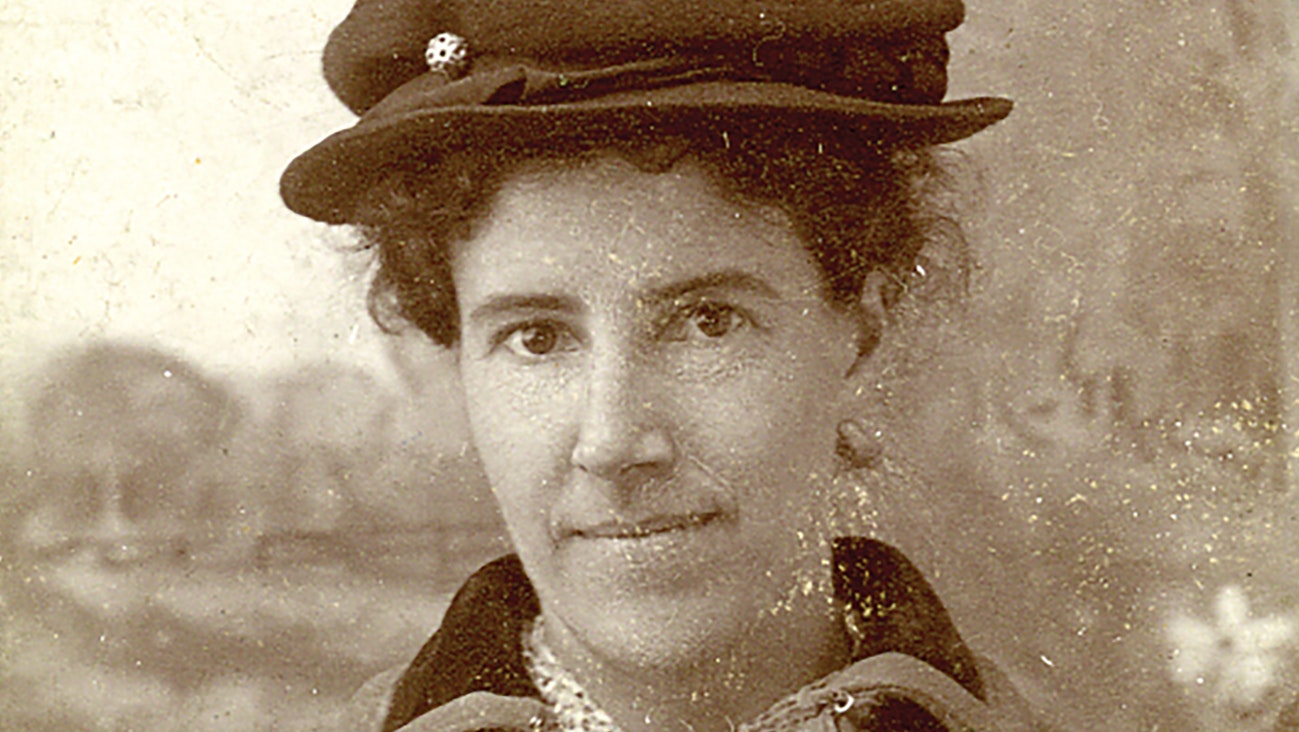The Evolution of Charlotte Perkins Gilman

Charlotte Perkins Gilman is one of those writers whose reputations have changed over time, and she has sometimes dropped out of view entirely. Internationally known during her lifetime (1860–1935) as a feminist, a socialist, and the author of Women and Economics (1898)—an instant classic—she was less well recognized for her prodigious literary output.
After her death, Gilman dropped out of the public consciousness for several decades. Then, when 1970s feminists discovered her, they tended to read her fiction more than her nonfiction. Her short story “The Yellow Wallpaper,” about a woman confined to her bedroom, hallucinating as she stares at the patterns on the wall, became especially popular, as did Herland (1915) and her other utopian novels.
Gilman is still known more for “The Yellow Wallpaper” than any other work, but contemporary scholars are taking another look at her, this time in a context that includes all her writing. That context is made possible by the Schlesinger Library, where Gilman’s papers reside and have recently been fully digitized. The Schlesinger is the world’s major repository for Gilman’s papers.
Judith A. Allen, a professor of gender studies and history at Indiana University, relied on the Schlesinger in writing The Feminism of Charlotte Perkins Gilman: Sexualities, Histories, Progressivism (University of Chicago, 2009), for which she was awarded a Schlesinger Library research grant in 1992–1993. Allen is much more interested in Gilman’s nonfiction than her fiction. She writes: “In 1898, Women and Economics made her known for the remainder of her feminist career as a sociologist, philosopher, ethicist, and social critic, producing some fiction on the side. By 1998, however, Gilman had become a feminist novelist and poet who produced some nonfiction.”
Cynthia J. Davis is another scholar who has recently re-examined Gilman’s life and work. A professor of English at the University of South Carolina, Davis wrote Charlotte Perkins Gilman: A Biography (Stanford University Press, 2010) over a period of 10 years, aided by a Schlesinger Library research grant in 1999–2000. Gilman’s autobiography, The Living of Charlotte Perkins Gilman, was published posthumously, and many other biographies of her have appeared.
“The Yellow Wallpaper” also continues to inspire scholars. Smith College historian Helen Lefkowitz Horowitz AM ’65, PhD ’69, RI ’01 published Wild Unrest: Charlotte Perkins Gilman and the Making of “The Yellow Wall-Paper” (Oxford University Press, 2010). She relied on Gilman’s papers while conducting her research and used as a source the diaries of Gilman’s first husband, Charles Walter Stetson, which are also at the Schlesinger.
It’s easy to understand why Gilman remains such a fascinating figure. Not only do her arguments that women need economic independence remain relevant today, but Gilman defied convention again and again in her life. She grew up in an austere New England milieu, married the impecunious artist Charles Stetson, and had a daughter, Katharine. But she was a reluctant wife and mother. Davis writes that before marrying Stetson, Gilman insisted he swear that he’d never expect her to cook or clean and never require her, “whatever the emergency, to DUST!”
In 1888, Gilman and her daughter left Providence, Rhode Island, for Pasadena, California, where she began a career of writing and lecturing. At a time when divorce was still scandalous, she divorced Stetson, but she also facilitated his remarriage to her best friend, Grace Channing, with whom Gilman remained close. She then sent her nine-year-old daughter back east to be raised by the new couple. After a passionate affair with a woman, Adeline (“Delle”) Knapp, Gilman married her first cousin, Houghton Gilman.
Plagued by depression throughout her life, Gilman relied on a variety of stimulants, Davis writes, including the newfound cocaine, a vial of which lasted her 10 years. Gilman’s death in 1935 equaled her life in drama: Three years after she was diagnosed with breast cancer, she committed suicide, announcing that she “preferred chloroform to cancer.”
Gilman left behind a suicide note that was published verbatim in the newspapers. It read in part: “When all usefulness is over, when one is assured of unavoidable and imminent death, it is the simplest of human rights to choose a quick and easy death in place of a slow and horrible one.”
A long silence about Gilman ensued. Her papers were mildewing in storage, according to Davis, until Gilman’s daughter, Katharine Beecher Stetson Chamberlin, gave the bulk of them to the Schlesinger in 1971 and 1972.
The library’s decision to digitize Gilman’s papers was based on their wide use and the fact that a lot of her work came out in newspapers that are now crumbling, says Jenny Gotwals, the manuscript cataloger who processed the most recent acquisitions, which were given to the library by Gilman’s grandchildren. The digitization was made possible by a gift from Cynthia Green Colin ’54.
Gotwals thinks the most interesting aspect of Gilman’s collections is her playfulness. “She really had fun while she was doing all this serious work,” Gotwals says. “If you just read her published work, you don’t get the idea that she was a great artist, she drew caricatures, she played Victorian word games. And at the end of her life, when she wasn’t as well known, she had fun being retired—gardening and playing with her grandchildren.”







